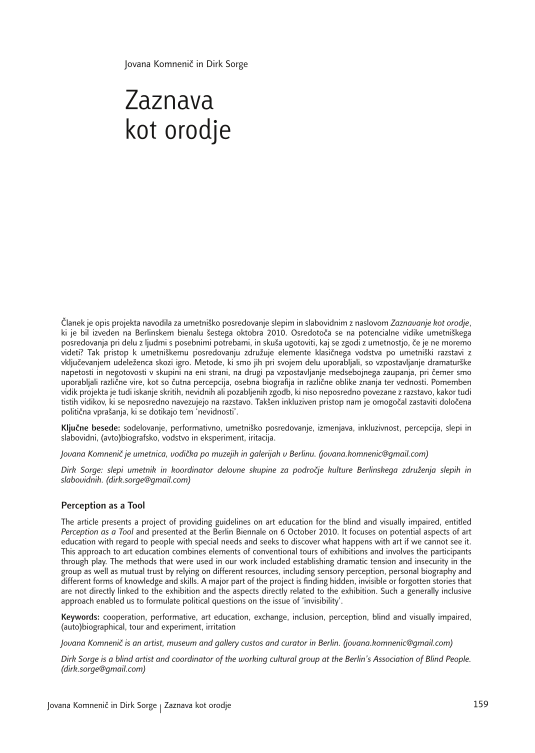The article presents a project of providing guidelines on art education for the blind and visually impaired, entitled Perception as a Tool and presented at the Berlin Biennale on 6 October 2010. It focuses on potential aspects of art education with regard to people with special needs and seeks to discover what happens with art if we cannot see it. This approach to art education combines elements of conventional tours of exhibitions and involves the participants through play. The methods that were used in our work included establishing dramatic tension and insecurity in the group as well as mutual trust by relying on different resources, including sensory perception, personal biography and different forms of knowledge and skills. A major part of the project is finding hidden, invisible or forgotten stories that are not directly linked to the exhibition and the aspects directly related to the exhibition. Such a generally inclusive approach enabled us to formulate political questions on the issue of ‘invisibility’.




